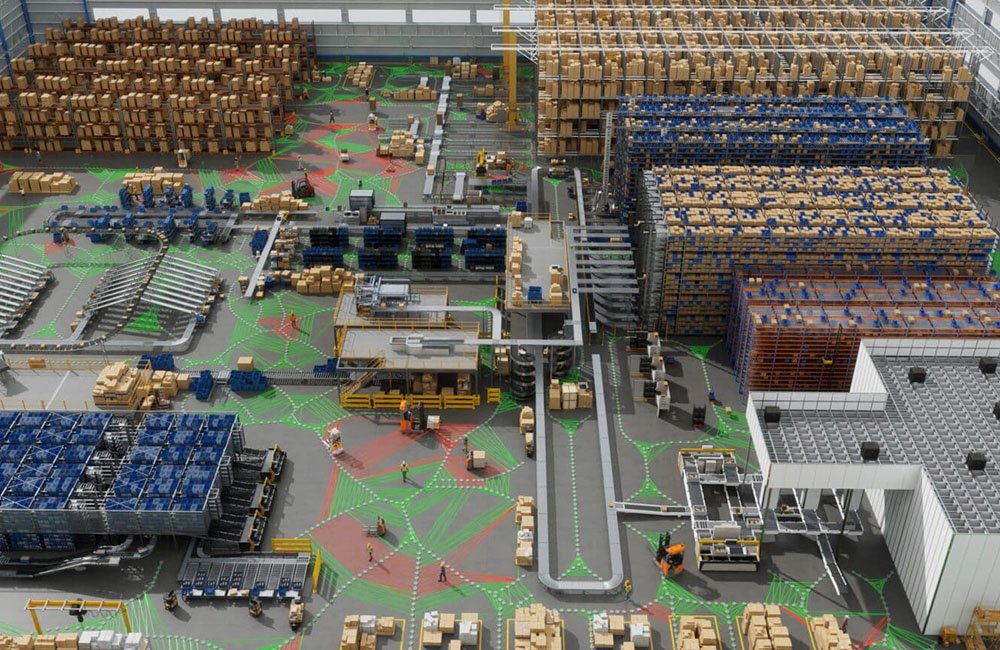
NVIDIA Corp.’s CEO Jensen Huang made a slew of announcements yesterday at CES 2025 in Las Vegas. They included the Mega Omniverse blueprint for building industrial robot fleet digital twins, adding generative physical AI to Omniverse, launching the Cosmos World Foundation Model platform, and releasing updates to its Isaac platform.
These announcements showed how NVIDIA is doubling down on investing in artificial intelligence technologies, particularly generative AI, for robotics. In addition to its new products, the Santa Clara, Calif.-based company announced that Toyota, Aurora, and Continental are developing their consumer and commercial vehicle fleets with NVIDIA computing and AI.
NVIDIA also said its DRIVE Hyperion Platform has achieved critical automotive safety and cybersecurity milestones. It said the platform has passed industry-safety assessments by TÜV SÜD and TÜV Rheinland — two industry authorities for automotive-grade safety and cybersecurity.
The company’s “end-to-end” system includes the DRIVE AGX system-on-a-chip (SoC) and reference board design, the NVIDIA DriveOS automotive operating system, a sensor suite, and an active safety and SAE Level 2+ driving stack.
NVIDIA updates Omniverse
NVIDIA announced Mega, an Omniverse blueprint for developing, testing, and optimizing physical AI and robot fleets at scale in digital twins before deployment into real-world facilities.
Mega offers enterprises a reference architecture of its accelerated computing, AI, NVIDIA Isaac, and NVIDIA Omniverse technologies, the company said. This allows them to develop and test digital twins for testing AI-powered “brains” that drive robots, video analytics, AI agents, equipment, and more.
NVIDIA added that the new Omniverse framework can handle enormous complexity and scale. It can bring software-defined capabilities to physical facilities, enabling continuous development, testing, optimization, and deployment, claimed the company.
With Mega-driven digital twins, including a world simulator that coordinates all robot activities and sensor data, enterprises can continuously update robots for intelligent routes and tasks for operational efficiencies, NVIDIA said.
The blueprint uses Omniverse Cloud Sensor RTX application programming interfaces (APIs), which enable developers to render data from any type of intelligent machine in the factory, simultaneously, for high-fidelity large-scale sensor simulation. This allows robots to be tested in an infinite number of scenarios within the digital twin, using synthetic data in a software-in–the-loop pipeline with NVIDIA Isaac ROS.
NVIDIA also announced generative AI models and blueprints to expand NVIDIA Omniverse integration further into physical AI applications such as robotics, autonomous vehicles (AVs), and vision AI. The company said these models accelerate each step of creating 3D worlds for physical AI simulation, including world-building, labeling the world with physical attributes, and making it photoreal.
“Physical AI will revolutionize the $50 trillion manufacturing and logistics industries. Everything that moves — from cars and trucks to factories and warehouses — will be robotic and embodied by AI,” stated Huang. “NVIDIA’s Omniverse digital twin operating system and Cosmos physical AI serve as the foundational libraries for digitalizing the world’s physical industries.”
Content retrieved from: https://www.therobotreport.com/nvidia-unveils-omniverse-upgrades-launches-cosmos-foundation-model-ces-2025/.






